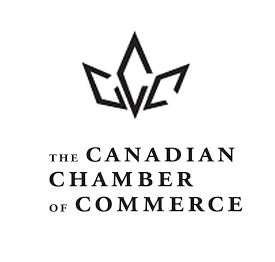
We collect basic website visitor information on this website and store it in cookies. We also utilize Google Analytics to track page view information to assist us in improving our website.
Learn more about Chamber Circles for Women and Entrepreneurs
|
|
||
|
The pain at the pumps consumers continue to feel as prices climb above $2 a litre won’t be dissipating anytime soon, warns Dan McTeague, President of Canadians for Affordable Energy.
“The problem is a shortage of oil,” says the former Liberal MP and long-time energy ‘watchdog’.
He says Russian President Vladimir Putin knows the world is vulnerable right now and has made it geopolitical and weaponized oil supplies in Europe through the invasion of the Ukraine, which has only magnified the issues already facing the other two major energy links in the world – namely Canada and the U.S. and OPEC (Organization of the Petroleum Exporting Countries).
As well, factor in a slowdown of world economies during the two years of the pandemic which resulted in a decrease in the demand for oil, resulting in oil companies putting a stop on drilling for new supplies or slowed, or even stopped, some refineries. Now, these same companies continue to have a tough time ramping up production to keep pace with demand.
It’s a dire situation, which Dan says he discussed in the fall of 2021 in an interview with Driving.ca, long before Russia launched its Ukrainian invasion. In the article, one of the things he points to is the introduction of the Trudeau government’s Clean Fuel Standard (CFS) which he bluntly referred to as ‘another tax dressed up as a clean-air credit’ that is going to cost average Canadians even more at the pumps. The CFS is set to be introduced Dec. 1 of 2022.
Taxes, of course, remain one of the largest components of fuel prices in Canada accounting for at least 34% of the average pump price.
Breakdown of gas taxes in Ontario:
This translates into a total amount of 58.6 cents/per litre worth of taxes in Ontario, on top of the base price of which near the end of May was 139.6 cents/ per litre. On average, this is in line with many provinces, except for Alberta which is 29 cents/per litre and Manitoba at 43.8 cents/per litre. Overall, Canadians are paying an average of 51.2 cents/per litre of taxes.
But is there a solution? Ideally, supply and demand would have to become more balanced which could be accomplished in several ways:
Dan believes the world is still a few decades away from turning fully away from oil and natural gas.
“We’ve got to get real about building pipelines again,” he says, adding we need to be more realistic when it comes to our current energy needs.
He says as it stands, there is not much business operators can do as they continue to deal with disrupted supply chains and expenses, especially around transportation costs.
“I think food costs are the next shoe to drop because of course fuel affordability is gone, and with it now comes everything else,” says Dan. |
||
|
||
|
||
|
||
|
|
|
||
|
Lots of controversy over pipelines to carry oil these days. Is it safe, if we don't do pipe, what will happen? Are there better alternatives? You decide.
|
||
|
||
|
||
|
||
|

|
|
Brian Rodnick 196 April 29, 2024 |

|
|
Greg Durocher 41 July 28, 2023 |

|
|
Canadian Chamber of Commerce 24 January 29, 2021 |

|
|
Cambridge Chamber 2 March 27, 2020 |